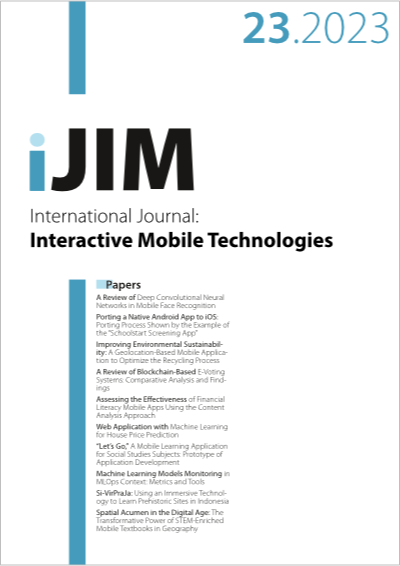Porting a Native Android App to iOS
Porting Process Shown by the Example of the “Schoolstart Screening App”
DOI:
https://doi.org/10.3991/ijim.v17i23.43829Keywords:
android, ios, native apps, porting automatically, porting manuallyAbstract
The two mobile operating systems Android and i(Pad)OS have dominated the smartphone and tablet market for years and app providers have to offer their apps for both systems in most cases in order to be competitive or to be able to reach the majority of potential customers. In native app development, separate applications have to be written and maintained for each platform. Often, apps are developed for one platform first and the second app is developed at a later stage, after some feedback could be collected. This porting from one system to the other can be either (partially) automated or manual, but in any case, it has its challenges. Both systems were designed with different approaches and differ greatly in some parts from each other – not only visually, but also in terms of the underlying structure. To illustrate the porting process, the Android app “Schoolstart Screening App”, which was developed for the Federal Ministry of Education, Science and Research of Austria by Graz University of Technology at the OU Educational Technology, was ported so that it can be used also on iPads. Automated approaches were discussed and the chosen process is explained to get a good overview of the topic.
Downloads
Published
How to Cite
Issue
Section
License
Copyright (c) 2023 Mattias Rauter, Josef Wachtler, Martin Ebner

This work is licensed under a Creative Commons Attribution 4.0 International License.


